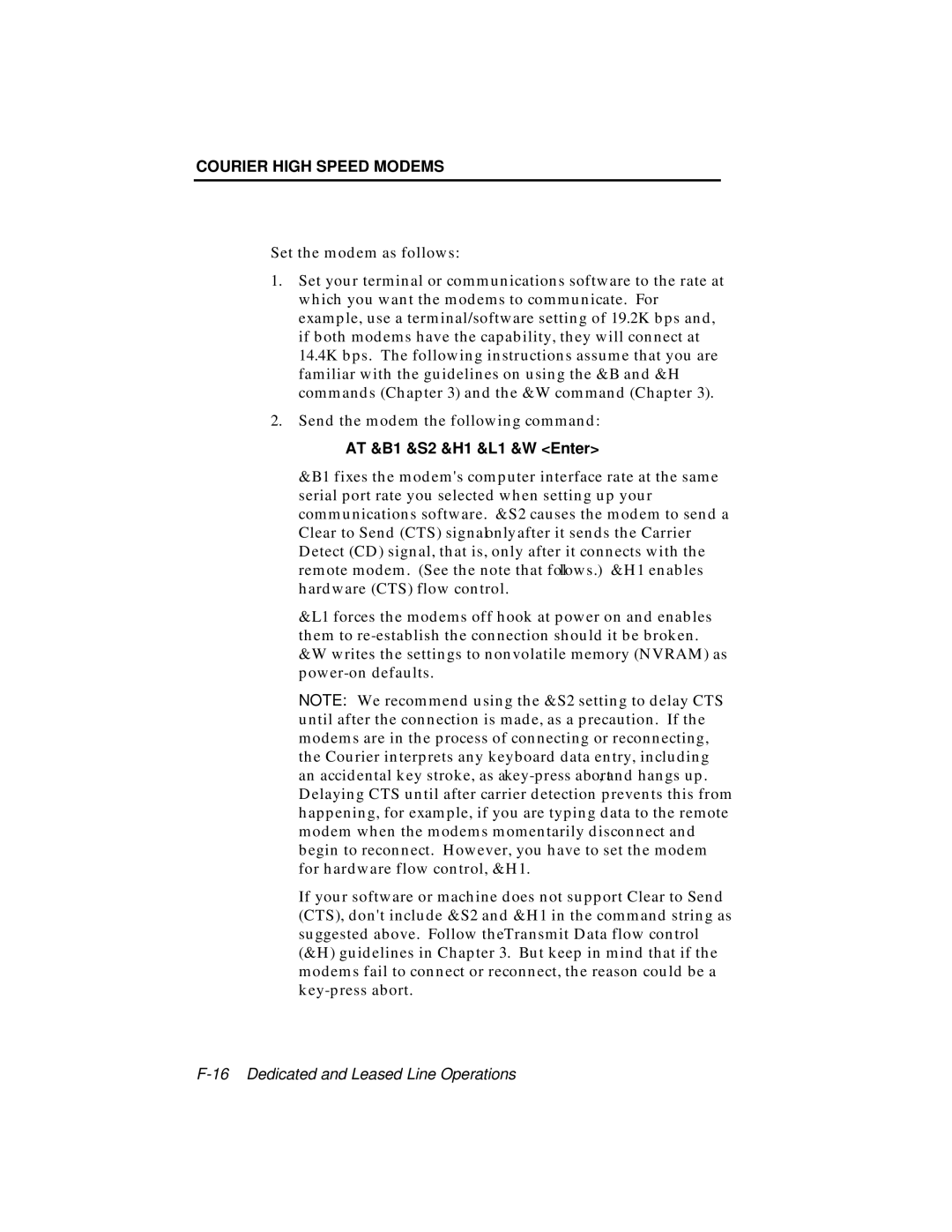COURIER HIGH SPEED MODEMS
Set the modem as follows:
1.Set your terminal or communications software to the rate at which you want the modems to communicate. For example, use a terminal/software setting of 19.2K bps and, if both modems have the capability, they will connect at 14.4K bps. The following instructions assume that you are familiar with the guidelines on using the &B and &H commands (Chapter 3) and the &W command (Chapter 3).
2.Send the modem the following command:
AT &B1 &S2 &H1 &L1 &W <Enter>
&B1 fixes the modem's computer interface rate at the same serial port rate you selected when setting up your communications software. &S2 causes the modem to send a Clear to Send (CTS) signal only after it sends the Carrier Detect (CD) signal, that is, only after it connects with the remote modem. (See the note that follows.) &H1 enables hardware (CTS) flow control.
&L1 forces the modems off hook at power on and enables them to
NOTE: We recommend using the &S2 setting to delay CTS until after the connection is made, as a precaution. If the modems are in the process of connecting or reconnecting, the Courier interprets any keyboard data entry, including an accidental key stroke, as a
If your software or machine does not support Clear to Send (CTS), don't include &S2 and &H1 in the command string as suggested above. Follow the Transmit Data flow control (&H) guidelines in Chapter 3. But keep in mind that if the modems fail to connect or reconnect, the reason could be a
